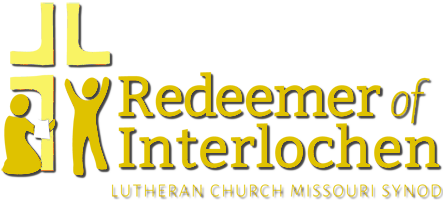

And so who are we as Lutheran Christians?
We as LCMS Lutherans are a confessional Church. This does not refer to the fact that we confess our sins every Sunday in Church (though this is important as well) but the fact that we are confessional means that we have a statement of beliefs of what we teach and how we operate as a Church. These confessions are collected in a book called the Book of Concord, a book that we do not see on the same level as Scripture but a book that we believe truly states the teachings of the Scriptures therefore we follow it. I have prepared for you a very brief overview of how these confessions came to be. One who looks into the history of the Church will note the striking development of the Papacy over time, so slowly that it was not noticeable. Also noteworthy was the spread of Christianity into northern Europe, not as much from Rome, but through Irish monks. During the dark ages a coziness developed between the Church and State so that the church functioned as the state leading to the loss of important doctrinal truth in exchange for power. Much of the Clergy did not know what the words of the mass meant, and there was a profound depravity of theological knowledge and understanding. Luther rediscovered Biblical truth, especially the doctrine of Justification in a world in which the emperor Charles was at odds with the Pope. Luther nailed the 95 theses and prepared the large and small Catechisms and the Reformation was underway. In 1530 the confession of this Reformation was presented in Augsburg. This contained the teachings of the Church in a brief simple form. The Augsburg Confession was prepared by Philipp Melanchthon, another Professor at Wittenberg, and presented by himself and the German princes. The general tone of the Augsburg Confession was conciliatory with a far fetched hope that the Roman Church may be shown it’s error and repent. This did not happen and the Apology dropped conciliatory language. The Pope called for a meeting in Mantua on the Italian side of the Alps in a hope to abolish the Lutheran church.
To prepare for this the Smalcald Articles were prepared by Luther in his typical blunt matter. The Lutherans refused the meeting in Mantua. This gave rise for the Church to articulate it’s independence from the rule of the Pope. This statement was prepared in Melanchthon’s treatise on the Power and Primacy of the Pope.
After the death of Luther the Church faced tremendous crises. Emperor Charles and the Pope became resolute to destroy the Lutheran, they bribed and blackmailed some important defenders of the faith and the Smalcald League was overtaken. Maurice, a German prince and leader of the Lutherans, who had been criticized by many decided to send forces and defeated the forces of the Pope at Innsbruck in Austria. In 1555 a treaty was signed and the Lutherans could exist in peace. The next major crisis was from within. Three branches formed, the Philippists, who hoped for reconciliation with Rome and other reformers, which in turn watered down the Truth that the Reformation fought so hard for. Another branch was the Gnesio-Lutherans who were appalled by the Philippists. A third group was equally committed to Lutheran doctrine but saw a need for a restatement and elaboration of the teaching to bring unity to Lutheranism, from this group the Formula of Concord was created. Through the Solid Declaration and the Epitome some unity was restored. What a treasure the Christian church has been given in these documents!